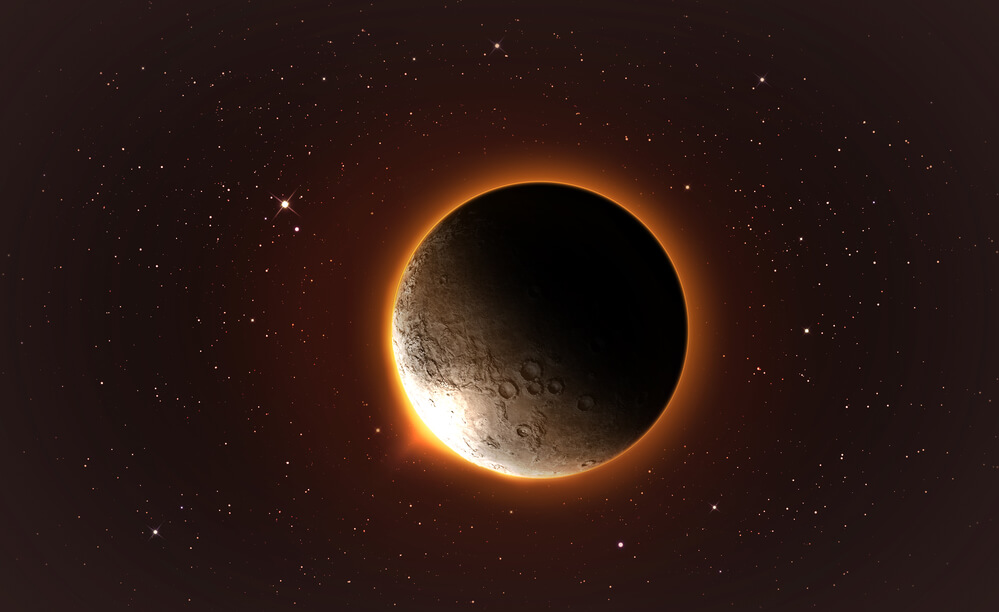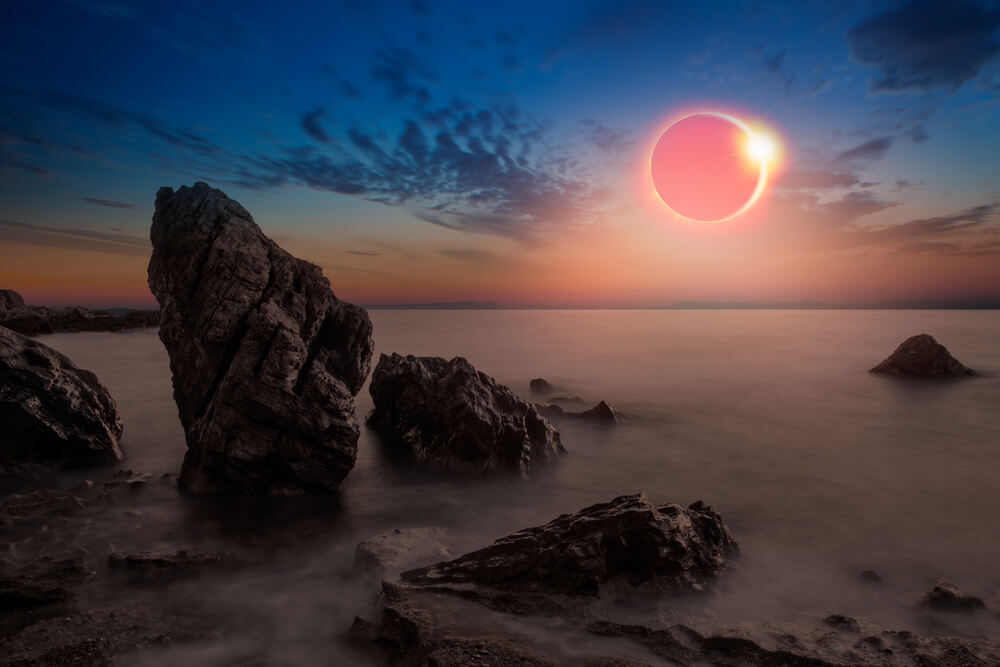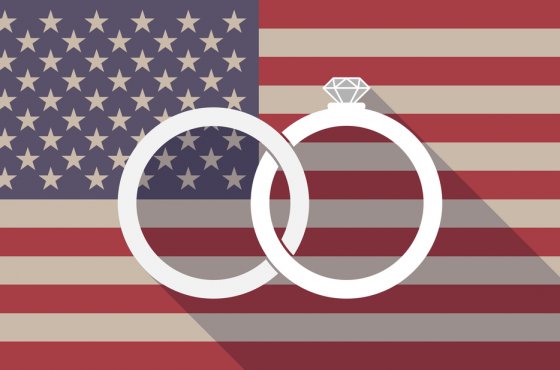Total Solar Eclipse: Spectacle Bands 110 km Wide

Фото: Depositphotos
The total solar eclipse on August 21, 2017 will only be visible in the United States, which is why it is called the “Great American Eclipse.”
Partial phases of the eclipse can be observed in North America, Western Europe, South America and Asia (the northern part of Kamchatka and Chukotka - with a maximum phase of just over 30%).
Some media outlets misrepresent this eclipse by assuring readers that it will be the "longest solar eclipse." In fact, the duration of this eclipse will be the most ordinary: The total phase of the eclipse within a relatively narrow band of passage of the lunar shadow - about 70 miles (112 km) will be from 2 minutes to 2 minutes 40 seconds.
The partial phases of the eclipse take approximately 1 hour 15 minutes - 1 hour 30 minutes before and after the total eclipse phase, so the duration of the entire eclipse (including the partial phases) will be about 3 hours.
Therefore, there is no need to talk about any 1.5 or 3 hours of “darkness” during a solar eclipse.

Фото: Depositphotos
Relative darkness (with the ability to observe planets and bright stars) will be only about 2-3 minutes, and only in a strip of lunar shadow. (By the way, the longest total solar eclipse of the XXI century was 8 years ago, July 22 2009. The duration of the total eclipse phase was 6 minutes and 39 seconds).
21 August 2017 total solar eclipse will pass through 14 states from west to east USA, through Oregon, Idaho, Wyoming, Nebraska, Kansas, Missouri, Illinois, Kentucky, Tennessee, Georgia, North Carolina and South Carolina.
The last time a total solar eclipse passed across the entire United States (from west to east) was 99 years ago—June 8, 1918.
The uniqueness of this eclipse is that it will be the most photographed eclipse in the entire history of observations.
A trip to the eclipse does not guarantee its complete picture. Bad weather or an “unfortunate” cloud for 3 minutes can ruin all the beauty of observing the sun’s corona.
And if the western states of the United States (Oregon, Idaho, Wyoming) have an average advantage with good weather compared to the eastern states of the United States (Georgia, North Carolina and South Carolina) in August, then news about the continuing fires in western Canada, in Washington, Oregon and Northern California can spoil the spectacle of a total solar eclipse due to smoke.
Moreover, the eclipse of 21 August 2017 promises to be both spectacular and one of the scandalous
So, for example, some “eclipse hunters” who managed to book hotel rooms in advance (one year in advance) accidentally found out that their original reservation ($80-100 USD per day) was canceled and they were offered to rebook the room at a 10-fold increase prices (about $1000 USD per day). However, after numerous complaints, these cases will be handled by the US Department of Justice.
Also reported on the hundreds of failures and cancellation of armor for car rental companies Hertz (Herz) in Oregon, due to their shortage during the period of a solar eclipse.
Last week, the company Amazon is returning payments for fake glasses and solar filters to monitor the solar eclipse, which flooded the market.
But there are fun cases
It turns out that there are tourists who come not to see the phenomenon of a solar eclipse, but to conceive a “star child” during the total phase.
Despite the hype, the shortage of hotel and camping rooms and the expected huge traffic jams, viewing a total solar eclipse in good weather is a cosmic spectacle like no other.
The main locations where it will be possible to observe a total eclipse:
Locality - Duration:
Madras (Oregon) - 2 m 02 s
Idaho Falls - 1 m 48 s
Casper (Wyoming) - 2 m 25 s
Grand Island (Nebraska) - 2 m 34 s
Jefferson City (Missouri) - 2 m 28 s
Carbondale (Illinois) - 2 m 39 s
Nashville (Tennessee) - 2 m 00 s
Columbia (South Carolina) - 2 m 30 s.
The maximum phase of a private solar eclipse for cities with Russian-speaking communities in the United States:
Populated area - Maximum phase (%):
New York - 71%
Los Angeles, California - 62%
Chicago, IL - 87%
San Francisco, California - 75%
Philadelphia, Pennsylvania - 75%
Seattle, Washington - 92%
Denver, Colorado - 92%
Houston, Texas - 67%
Washington, DC - 81%
Atlanta, Georgia - 97%
Miami, Florida - 78%
Boston, Massachusetts - 63%.
PS I do not want to upset the residents of major US cities in the above list (New York, Seattle, Atlanta, Miami and beyond), but the reality is that for the observer on earth there will be little significant perception effect private eclipse at phases - be it 10% or 97% of the maximum “coverage” of the sun by the moon. Therefore, information that some cities will be plunged into darkness for several hours does not reflect reality at all.
Many residents of these cities will not even notice a particular change in the lighting of the sun.
In any case, it is not recommended to look directly at the Sun during all private phases of a solar eclipse, as this may affect vision. You need to use special glasses for the eclipse in all of the above cities with phases of a particular solar eclipse (New York, San Francisco, Chicago, Los Angeles, Seattle, Atlanta, Miami, and more).
And if you are in a strip of total solar eclipse, then during its 100% phase and only on 2 - 2,5 minutes (cities Madras, Idaho Falls, Casper, Grand Island, Jefferson City, Carbondale, Nashville, Colombia) you can watch and photograph the solar crown without glasses and filters.
About the Author:
 Krivenyshev Alexander - President of the World Time Zone project (WorldTimeZone.com)
Krivenyshev Alexander - President of the World Time Zone project (WorldTimeZone.com)
The first solar eclipse was observed in 2008 in Siberia (Novosibirsk). Then an eclipse on Marshall Islands (2009), Easter Island (2010), New Mexico (ring-shaped
eclipse 2012) and Australia (2012), Uganda (2013), Faroe Islands (2015), Indonesia (2016)
Read also on ForumDaily:
Where to watch the solar eclipse in New York, San Francisco, Los Angeles, Miami and Chicago
How to protect your eyes from burns during a solar eclipse
NASA safety tips for those who are going to look at the eclipse of the sun
Subscribe to ForumDaily on Google NewsDo you want more important and interesting news about life in the USA and immigration to America? — support us donate! Also subscribe to our page Facebook. Select the “Priority in display” option and read us first. Also, don't forget to subscribe to our РєР ° РЅР ° Р »РІ Telegram and Instagram- there is a lot of interesting things there. And join thousands of readers ForumDaily New York — there you will find a lot of interesting and positive information about life in the metropolis.











